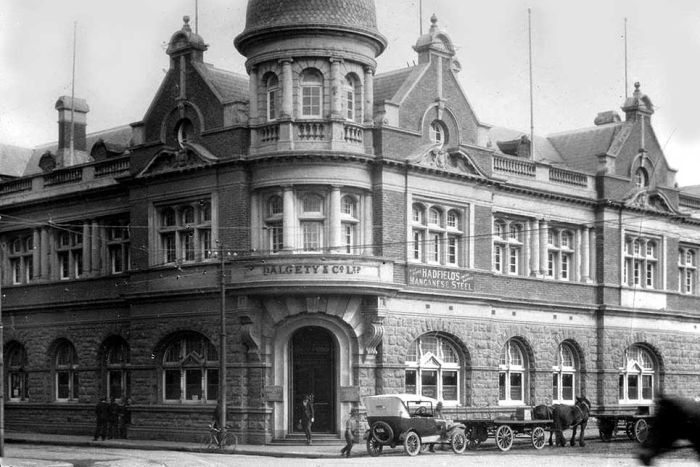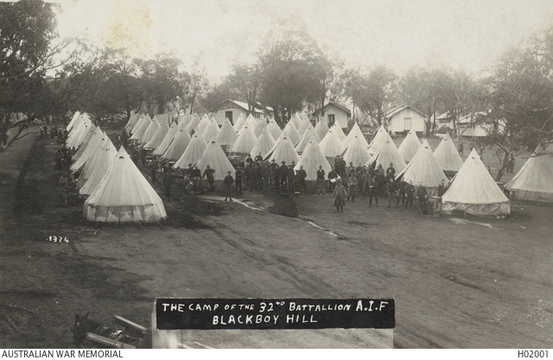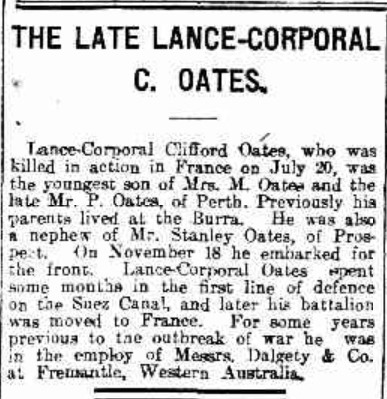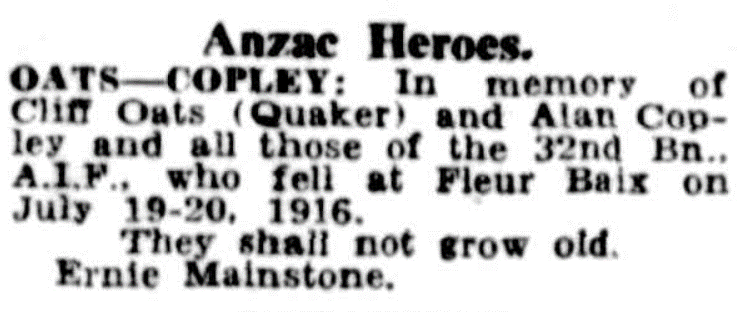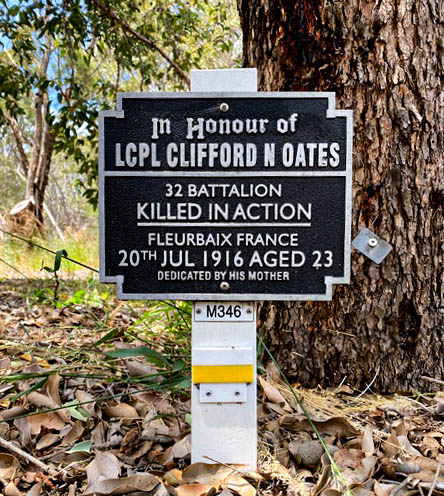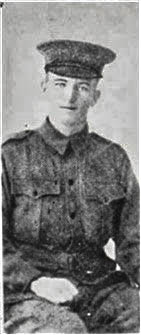
Clifford Nicholls OATES
Eyes blue, Hair light brown, Complexion fair
Clifford Oates – A South Australian off to War
Clifford “Cliff” Nicholls Oates was born in Clare, South Australia in 1893 to parents Philip and Mary Oates (nee Nicholls), the fifth of their six surviving children:
- Leslie Philip 1886–1965
- Lewis Brewer 1888–1956
- Leonard Hanson 1890–1956
- Hedley Gilbert (Herbert) 1892–
- Clifford Nicholls 1893–1916
- Gladys Clare 1895–1985
Philip and Mary had been married in Iron Side, South Australia, near Burra in July 1885. At some time after Gladys was born, the family moved to Western Australia and by 1899 were living in Victoria Park, Perth. Philip was working as a driver transporting goods. Later, the family moved to West Leederville, just north of Perth.
When Cliff was ten years old, his father died from fever. Cliff attended Perth Boys Central School and was then employed by Messrs Dalgety & Co in Fremantle as an auctioneer. He also served in the 11th Infantry, Citizen Military Forces for 12 months.
Cliff’s older brothers were in the car industry and had moved to South Africa to run businesses.
Off to War
Cliff showed up for his Army medical in Perth in July 1915 and was declared fit for service. He was living at his mother’s house at Leonard Street in Victoria Park at the time. He was assigned to the newly formed 32nd Battalion, which was being made up of two companies from Western Australia and two from South Australia. Cliff was assigned to C Company. His initial training was at Blackboy Hill, Perth.
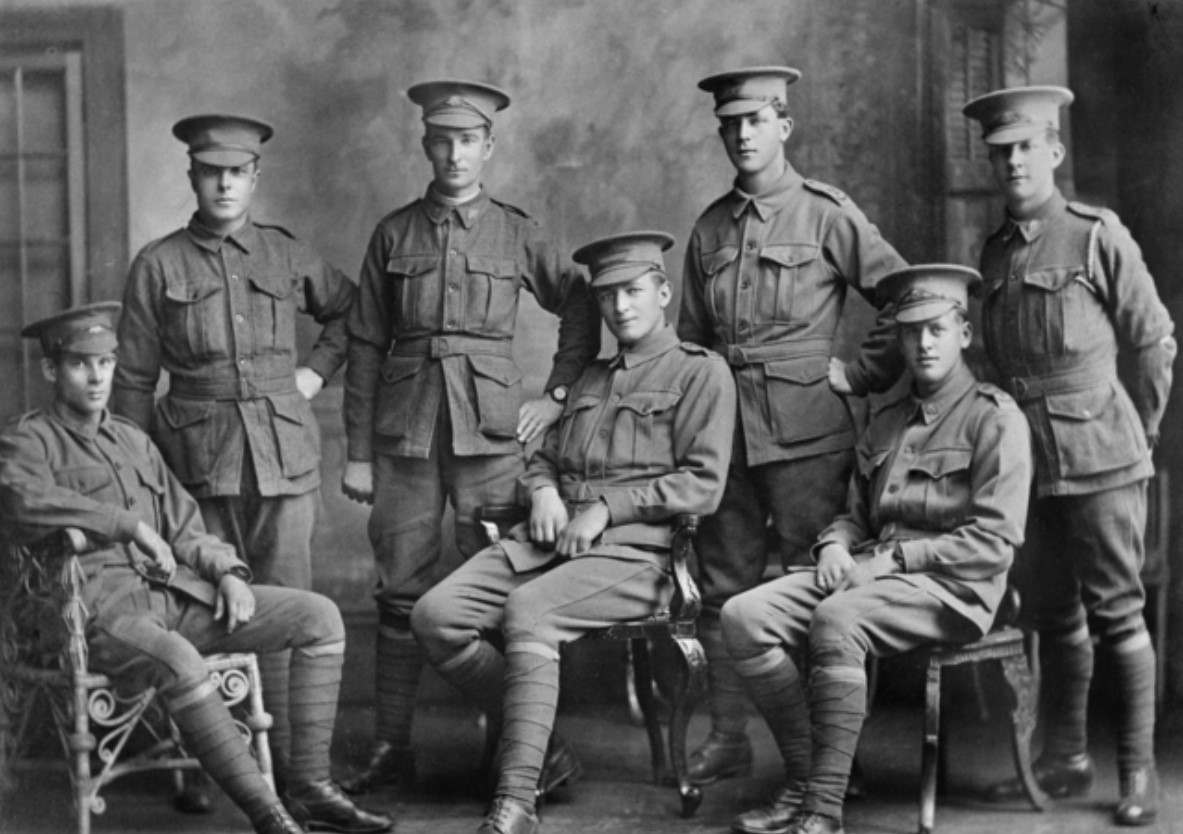
Front row, from left: Forrest Raymont Turton (1064), Clifford Nicholls Oates (1025), and Allan Wallace Copley (913)
Of the seven soldier shown above, all met various fates:
991 Clarence James Martin was injured during the war and died of war injuries in 1942.
973 William Edward Junner was wounded in action at Fromelles with a gun shot wound to the chest
1015 Ernest John Mellows was transferred to 8th Machine Gun Company and was initially reported as killed in action however he had sustained a gun shot wound to the head and survived.
989 Ernest “Ernie” John Mainstone was wounded in action at Fromelles with Gun shot wound to his foot, he would later serve in WW2 as well.
1064 Forrest Turton was a prisoner of war in Germany after the battle until Dec 1918
913 Allen Copley, a stockman from Cottesloe, Western Australia, prior to enlistment, was transferred to the 8th Machine Gun Company on 9 March 1916 with 1015 Ernest Mellows. Pte Copley was initially reported killed in action on 20 July 1916 during the Battle of Fromelles. He was subsequently reported as wounded in action and the British Red Cross Society (Berlin Branch) records that he died of these wounds at Valenciennes, France, on 25 July 1916 while a prisoner of war in German hands. He was aged 22 years. The other five photographed returned to Australia for discharge at dates between December 1918 and June 1919.
Source: AWM https://www.awm.gov.au/collection/R1657456
In September, the Western Australians sailed from Fremantle to Adelaide to form the full battalion and continue their training. The 32nd sailed from Adelaide on 18 November 1915 aboard HMAT Geelong A2, headed for Egypt.
As reported in The Adelaide Register:
“The 32nd Battalion went away with the determination to uphold the newborn prestige of Australian troops, and they were accorded a farewell which reflected the assurance of South Australians that that resolve would be realized.”
They arrived in December 1915 and went to the large camp at Tel-el-Kebir. A month later they marched to Ismailia, then back to Tel-el- Kebir for February and most of March. The next stop was at Duntroon Plateau and Ferry Post until the end of May, training and guarding the Suez Canal. Their last posting in Egypt was a few weeks at Moascar.
During their time in Egypt the 32nd had the honour of being inspected by H.R.H. Prince of Wales. In May 1916 Cliff was promoted to Lance Corporal. The call to join the British Expeditionary Force at the Western Front came in June 1916 and they sailed from Alexandria for France on the Transylvania. After their arrival at Marseilles, they took a train to Morbecque, near Hazebrouck in northern France.
Theodor Pflaum (No. 327) wrote about the trip in his diary – ‘The people flocked out all along the line and cheered us as though we had the Kaiser as prisoner on board!!’
Source AWM C2081791 Diary of Theodor Milton PFLAUM, 1916, page 8
Battle

The Australian 8th Brigade, which 32nd Battalion was a part of, were to assault the German trenches on the left flank, crossing 100 metres of no man’s land to get the trenches. Being on the extreme left flank made their job much more difficult, as not only did they have to protect themselves as they advanced on the German lines, but they had to block off the Germans on their left to stop them from coming around behind them whilst advancing.
All were in position by 5.45 PM on the 19th. Cliff was in C Company and, along with A Company, formed the first and second waves of the attack. The charge over the parapet began at 5.53 PM. The 32nd and 31st Battalions suffered heavy casualties as they commenced their assault, but the men were able to capture the German frontline trenches opposite them.
By 6.30 PM they were in control of the German’s 1st line system (map Trench B), which was described as “practically a ditch with from 1 to 2 feet of mud and slush at the bottom”.
Source AWM4 23/49/12, 32nd Battalion War Diaries, July 1916, page 11
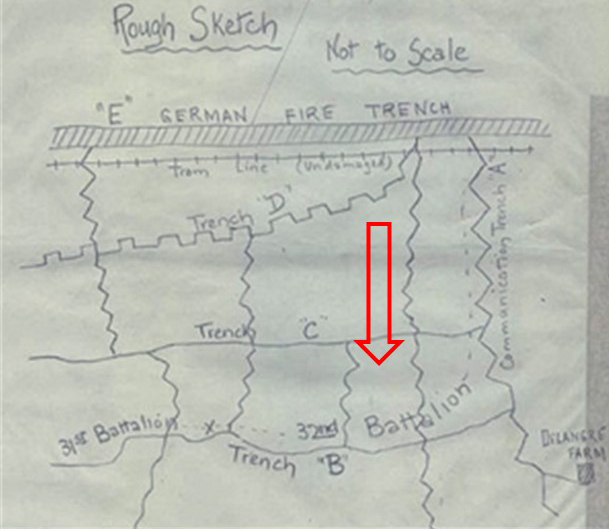
Unfortunately, with the success of their attack, ‘friendly’ artillery fire caused a large number of casualties. They were able to take out a German machine gun in their early advances, but they were being ‘seriously enfiladed’ from their left flank. There were continued German counter attacks during the night and the Australians maintained their positions until about 3.45am before the Germans were able to penetrate gaps and get access behind the Australian lines.
It was at this time the Australians decided to withdraw from the trenches to have to fight their way back to their lines.
“The enemy swarmed in and the retirement across No Mans’ Land resembled shambles, the enemy artillery and machine guns doing deadly damage.”
What was left of the 32nd had finally withdrawn by 7.30 AM on the 20th. The initial head count was devastating – 71 killed, 375 wounded and 219 missing. To get some perspective of the battle, when Charles Bean, Australia’s official war historian, attended the battlefield two and half years later, he observed a large amount of bones, torn uniforms and Australian kit still on the battlefield.
The final impact was that 225 soldiers of the 32nd Battalion were killed or died from wounds sustained at the battle and of this 166 were unidentified.
Cliff’s Fate
Cliff’s fate during the battle is unknown as there are no witness statements or reports on him available. Initially it was reported that he had been wounded and this information was passed to his mother in mid-August 1916. However, the telegram was not able to be delivered to her since she had moved.

He was not reported as a POW nor was he noted as being on a German ‘death list’ of soldiers recovered from the battlefield. A few weeks later his fate was revised to having been killed in action. His mother was contacted on 31 August. His body, however, remains undiscovered.
Remembering Cliff
“The flag at Dalgety's office was flying half-mast yesterday on news being received of the death of Private Oates, he having succumbed to wounds in France on July 23. Mr. Oates was in the stock department of the company, with a very promising future before him, and his death is a source of the deepest regret to the management and staff.”
His family was clearly distraught. In August 1919 his mother dedicated a memorial plaque and planted a tree in his honour on May Drive, Kings Park Botanical Gardens, Perth.
Even as late as 1950, Ernie Maidstone (989), one of his mates in the 1915 photo of the lads from C Company, placed a memorial notice in the newspaper.
Cliff was awarded the 1914/15 Star, British War and Victory Medals and a Memorial Plaque and Scroll.
He is commemorated at:
- VC Corner Australian Military Cemetery (Panel 4) Fromelles France,
- Australian War Memorial,
- Kings Park Memorial
- Dalgety’s Honour Roll,
- Victoria Park State School Honour Board,
- Victoria Park War Memorial
- and the West Leederville War Memorial.
Can Cliff still be found?
As of 2024, 41 of the 166 unidentified soldiers from the 32nd have been found to be in the German mass grave at Pheasant Wood that was discovered in 2008. Identification has been able to be done by DNA matching from family members.
Cliff may be one of the 70 remaining soldiers in the grave who are not yet identified. Family have kindly submitted DNA to help find Cliff.
Family who also served

Cliff’s brother Hedley (Bert) had moved to South Africa prior to the War. He was unable to return to Australia, but he enlisted in South Africa. In World War 2, Hedley’s son / Cliff’s nephew Leonard John Oates was a member of the South African Air Force. Leonard was killed in action on 28 November 1934 while in the Sangro area, east of Castel Frentano, Italy. He is buried in the Moro River Canadian War Cemetery in Italy. You can read more about his story here: “Eagles victorious: The operations of the South African forces over the Mediterranean and Europe, in Italy, the Balkans and the Aegean, and from Gibraltar and West Africa", by Henry James Martin and Neil D. Orpen. ISBN: 0868430080
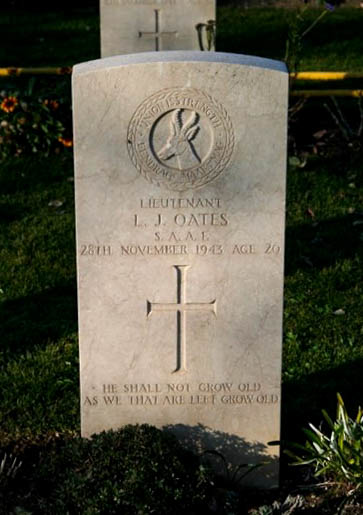
Cliff’s sister Gladys married Percival John Rillstone in 1918, from Ballarat, Victoria. He had joined the AIF in 1915, was attached to 48th Battalion and rose to the rank of Captain. He was wounded at Pozieres, France and returned to England acting as a Brigade-Major at Headquarters London.
Cliffords Family Tree
| Soldier | Clifford Nicholls Oates (1893–1916) |
| Parents | Phillip Oates (1861-1903) b Honey Suckle Flat, SA d Perth WA and Mary Nicholls (1861-1942) b Booborowie, SA, d Johannesburg, South Africa |
| Siblings | Leslie Philip (1886-1965) b Leighton SA m Florence Annie Banfield (1889-1982) b Broken Hill NSW d Fremantle WA | ||
| Lewis Brewer (1888-1956) b Kooringa, SA, d Pretoria South Africa m Stella Mary Rawlings (1886-1919) b Richmond Victoria, d Perth WA | |||
| Leonard Hanson (1890-1956) b Burra, SA, m Bridget Butler (1890-1981) b Jamestown Australia, d Johannesburg South Africa | |||
| Hedley Gilbert (1892-) Farrell Flat, SA, m Pearl Cadden (1891-1981) b Glen Innis, NSW, d Cape Town South Africa | |||
| Gladys Clare (1895-1985) b Clare SA, d South Africa, m Percival Rillstone (1889-1970) b Ballarat Victoria, d South Africa |
| Grandparents | ||||
| Paternal | Phillip Merrick Oates (1836-1931) b Kenwyn, Cornwall, England d Prospect, SA and Adelaide Louise Brewer, (1840-1905) b Adelaide SA, d Parkside WA | |||
| Maternal | William Nicholls (1831–1878) b Tillingham, Essex, England, d Booborowie, SA Ann Meany (1836–1881) b Thomastown, Kilkenny, Ireland, d Booborowie, SA |
The Fromelles Association would love to hear from you

Contacts
(Contact: royce@fromelles.info or geoffrey@fromelles.info).
(Contact: army.uwc@defence.gov.au or phone 1800 019 090).
Donations
If you are able, please contribute to the upkeep of this resource.
(Contact: bill@fromelles.info ).
